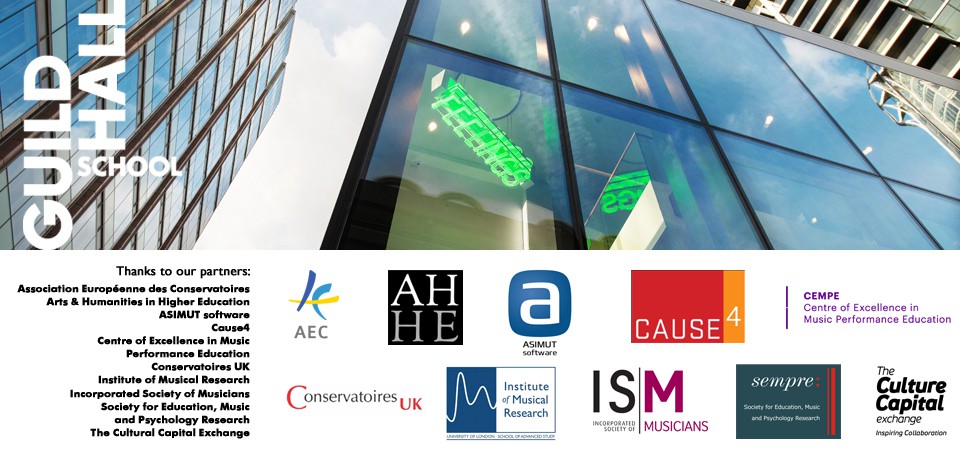Niilo Tarnanen, Composition Master’s student at the Sibelius Academy, University of the Arts Helsinki, and student activist, highlights compelling reasons to improvise as a classical musician, and why improvisation should be taught in conservatoires. Please add your comments in the “Leave a Reply” box below.
Why improvisation should be integrated in classical music curricula
I love to improvise. Even if I gave up all other forms of musicianship I couldn’t help improvising. Were it entertaining myself with nonsense singing, making ex tempore second voices to familiar tunes sang by my sisters, exploring the keyboard, or enjoying the bassoon from rich multiphonics to expressive melodies, I’ve grown up improvising.
Not everyone is as keen an improviser. Some feel uncomfortable, afraid, put on the line. Nevertheless, I think improvisation has a lot to give. It should have its place in every musical curriculum from beginner level to the peaks of academic life. In particular, it needs to be rediscovered in classical conservatoire programmes, where in most cases it’s not an everyday activity as it is in jazz or folk music studies.
Improvisation has some well-known and obvious benefits. It feeds creativity and enables immediate self-actualization. Improvising on your own, you become aware of your musical sub-conscious. In the context of free improvisation, there are no right and wrong solutions: you have to trust your instincts. Today, some musicians seem to be just aiming at correctness instead of personal expression. Improvisation brings a welcome balance to this. I often start my mornings with a short impro session, after which both instrumental practice and composition feel more natural and connected to my core motivation.
Improvisation turns everyone into a listener. It enhances aural schematizing and increases our sense of stylistic nuances. This is good for both composers who can get fixated on over-analytical thinking, and for performing musicians who can become obsessed with learning pre-existing music note by note. While improvising, we have to navigate purely by ear. We are reminded that notation is not music. Music can, and often does, exist without it. What is relevant is what can be heard.
What I find most rewarding in improvisation are its communicative properties, realised only through collective improvisation. Here one can participate in a dialogue through which new ideas and magical moments appear, things that one could never encounter alone. The more variety of backgrounds there are amongst the participants, the more exciting the challenges that are posed and the more colourful and surprising music becomes.
Of course, achieving such a successful level of communication in improvising requires some practice. Bad improvisation is a mess, just like a bad conversation. This is exactly why improvisation can and should be taught. One needs to learn listening, focusing and participating: respecting others as well as yourself.
In May 2013, I co-founded the improvisation group Korvat auki ensemble (Ears Open ensemble) together with fellow composition students as a branch of the contemporary music society of the same name at the Sibelius Academy, Helsinki, founded in 1977. When we started, some of our singers, wind and string players, keyboardists and object artists were completely inexperienced in improvisation. Others, like the cellist, composer and musicologist Sergio Castrillón, and pianist, composer and sound-engineer Libero Mureddu, were already very experienced collaborative improvisers. With their advice and exercises we soon found a genuine platform for interaction.
The communicative nature of music is too often forgotten in classical music circles, perhaps because of this strict and at times narrow ideals of the profession. Instrumentalists, singers, composers, conductors, amongst others, are all aiming at higher and higher virtuosity. At the same time, they become increasingly isolated from one another’s worlds to the extent that they can no longer understand each other. How then, can the audience understand any one of us? How can any one of us understand the audience?
The greatest advantage of improvisation is that it generates common ground between everybody, which is simultaneously creative and perfomative. Composers become performers and performers composers. While I don’t wish to lose these categories altogether in professional practice, I rejoice at the fact that improvising enhances our understanding of the nature and possibilities of the other professions, instruments and approaches.
As a four-year-old, I sang my own tunes. I doubt that was a sign of me becoming a composer. Small children improvise: they fool around with any acoustic material that they can easily manage. Unfortunately some lose this playful behaviour later.
Many become victims to the kind of education that kills divergent thinking. This is a shame in a world full of new ideas to discover. I’m happy to see that, at least in Finland, the trend has turned towards a (music) pedagogy that supports small children’s innate creativity. But when we come to the education of teenagers, not to mention various levels of professional education, the revolution is still to come.
Improvisation has played a key part in professional musicianship throughout most of the history of Western art music. We should restore the status of improvisation. It teaches flexibility, openness and communication; skills that are and will become even more crucial for the careers of our generation. It’s not guaranteed that big orchestras, opera houses and other institutions that fit perfectly with the normativism and trends of convergence present in conservatoires, will still be the foundation of classical music in fifty years.
And while there are many reasons to teach improvisation because of its benefits for classical musicians, we must also not forget that it is a branch of musicianship worthy of its own name. At its best, improvisation results in wonderful music that is hard, if not impossible, to achieve in other ways.
Niilo Tarnanen will soon complete a Master’s degree in composition at the Sibelius Academy, University of the Arts Helsinki. During his studies, he has held some key positions of trust such as the chairperson of Sibelius Academy Student Union (2012).
